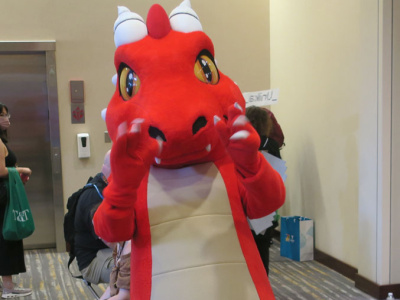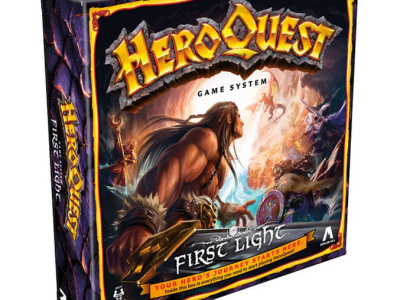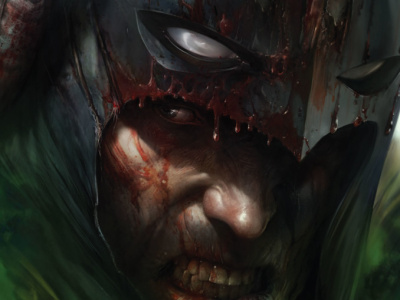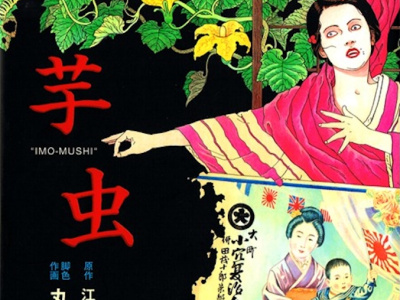
ICv2 met with DC’s new Co-Publishers, Dan Didio and Jim Lee, at San Diego Comic-Con last month in our annual conversation about the state of the market and DC’s place in it. In Part 2 of this three part interview, we talk about DC’s media tie-ins this year and next, the beginnings of the changes at DC since its management changes, and the co-publisher arrangement between Lee and Didio. In Part 3, we talked about how DC’s now working with other DC divisions, a possible move of the DC offices to
DC had a couple of movie releases in the first half of this year, Losers and Jonah Hex, that were not very big at the box office. Can you talk a little bit about what those properties did in terms of sales of print products? And what does that tell you about the future relationships between print and other uses of the property?
Didio: There’s a couple of things we learned Between Losers and Jonah Hex we didn’t see that level of spike on the periodical side but we did see some level of interesting growth on the book store side. The Losers collections actually sold through for us. We went back and did another printing on them. We wanted to get them out as quick as possible while there was still interest in the property from either the movie or hopefully with the release of the DVD. For Jonah Hex we did an original graphic novel that actually made the New York Times hardcover bestseller list when it was released, something that you probably wouldn’t think that Jonah Hex would be up there and doing, but there it was out there. The Wildstorm team is now working on a whole bunch of products tied into the release of Red later this year, and we hope to see some level of interest and excitement from that too.
That takes us right into the next question which is, over the next twelve to eighteen months, talking about TV, movies, and videogames, what are the things you’re most excited about in terms of the potential to drive sales in the stores?
Lee: On the videogame side, I’d say DC Universe Online scheduled for November 2nd release through Sony Online Entertainment. We plan on supporting it with a bi-weekly comic book that basically ties into the storyline that’s crafted for the game itself.
You couldn’t ask for a better demographic of people that to choose from to convert to comic book readers. These are people that are gamers and they’re going to be exposed to not just Justice League, Superman, Batman, and Wonder Woman, they’re going to be exposed to hundreds of secondary and tertiary DC heroes and villains and probably get to know our universe better in certain ways than the comic book readers, because they’ll be going through the universe at a much quicker pace. It would be great to be able to convert some of those gamers into readers. Being able to sell comics digitally and also co-market through the user interface when you log into the game, these are opportunities that look particularly ripe for us.
Arkham Asylum II, which is next year (and the first game was a tremendous success), and we’re already talking about ways to support it and cross-market with it.
Didio: We’d be remiss if we didn’t mention the Green Lantern movie for next year. Naturally we’re on board and when we see the real interest and the real foot traffic in a lot of the bookstore market, we’re trying to create and craft as much material as possible to support Green Lantern in the bookstore market. We have a lot of wind to our back with Green Lantern right now from Blackest Night and we only hope that the movie helps to launch us even further. It’s really becoming one of our premier franchises.
We wanted to talk a little bit about the transition of management. We’re six to nine months in…
Didio: Five! We’re five months in. (laughter)
The first question is what percentage of the transition process is complete?
Lee: We’re getting fairly close but nothing’s been implemented per se. From the outside looking in it probably seems as if nothing has dramatically changed. I think we’re getting closer to the end state that we’ve been strategizing about.
Didio: For us right now the good part about it is that there was nothing dramatically broken at DC comics, so the goal for us was just to be as we’re working through transitions not to be disruptive to the business at hand. We have a lot of things that are working strongly, we’re going in a slight course correction in different places. Like you said, there was a change in business strategy with CMX but that wouldn’t have been much different even without a change in management.
From our standpoint right now it’s keeping everybody on track, keeping everybody focused on the task at hand. The good news for us right now is that, ike I said before, we have the wind to our back coming out of Blackest Night with the DCU product. We have a little bit of small renaissance going on with the Vertigo books that are going out right now that seem to be attracting an inordinate amount of new attention and new excitement. Even more importantly we also have a sense of focus with what’s going on with Wildstorm too, with a lot of the key tie-ins with licensed products, between the tie-ins to the videogames and the movie support and things like that. So we have a lot of interesting strategies going on here and we want to make sure that we continue to build on those strengths.
Any other change to come in place is really just getting us a smarter, tighter, more focused attack on how we’re going to be able to do things working more hand in hand with the other divisions, both within DC comics and with Warner Brothers itself.
One observation that we’ve heard is that a co-publisher arrangement is unusual and might be…
Didio: Well I’ve never been in one before! (laughter)
Lee: This is my third, and Image Comics was six co-publishers!
The question is how stable that kind of relationship could be? How’s it been doing what you do, how are things split up, and how’s that working out?
Didio: He’s the stable one (laughs).
Lee: 100% stable, and 100% unstable (laughs)
I think it’s gone really well. The advantage to this is that Dan and I knew each other for years before we got into this and we’ve worked together before, so we weren’t coming into this cold and having to go through this whole quote-unquote “honeymoon period” where we kind of feel each other out (that’s a very awkward phraseology there (laughs)). We really hit the ground running and on top of that we have different areas of focus so you know, along with John Ruud I was really focused on developing and launching the digital channel, and that’s taken up a lot of time and effort. Dan being in New York is on the ground daily running DC Comics, so it allows us to have this relationship where I’m 3000 miles away and still be involved. All kidding aside, it’s a lot of traveling, a lot of work but at the same time it’s been very rewarding. I really do feel that together we’re able to tackle more things than we would be able to if there was just one person.
Didio: It’s different for me too. I didn’t really give much thought to it when they said you get a chance to work with Jim on it, I was just very comfortable with the idea because I was comfortable working with Jim and just knowing him from the past.
There are two things I always point to: again, like I said, I have gravitated more to the print side and Jim’s gravitated more to the digital side. I can honestly say it’s not that it doesn’t excite me, but I don’t have the level of understanding that Jim has on the digital side. He was online at seven o’clock in the morning at WonderCon to buy the iPad. I wouldn’t even think of doing that. I want no part of that!
(laughter)
I just like to sit back and actually listen to Jim talk about the digital stuff because he has such a clear understanding of it. It’s actually on a level very visionary about where this ought to be. So my goal for right now is just to make sure that the publishing/print side stays as strong and vibrant as possible while they really figure this new business out. I think that’s one of the things that really works great together.
On the creative side, though, I think it was even Jim who coined the phrase when you look at myself and Jim with Geoff Johns involved, you’re actually looking at the writer, the artist, and the editor between the three of us. That’s sort of the way we work. You have an incredibly collaborative process that’s not just working on a particular book and not even just for publishing, but across the line itself. I think that’s what’s exciting. We enjoy working with each other.
I’m just going to do one anecdote for a moment here. We’ve been so engaged with so much of the business aspect of finding ways to get through the transition and build a stronger company that we were just sitting down and talking creatively at lunch one of the other days and we all forgot how much fun it was just talking about the creative part, talking about the books themselves. And that’s one thing that we shouldn’t get too far away from, especially for Jim and for Geoff, because they have such incredible strengths in those areas. It would be a waste of resource if we didn’t have them involved in the process on the creative side as much as we need them to be.
Lee: In fact I don’t think you’ll see the fruits of that labor probably until next year, but that’s going to be another exciting dimension to all this, that when people start seeing how we work, the three of us creatively, and how it impacts the entire company we’ll have something different to talk about next year.
Click here for Part 3 of the interview.
Click here for Part 1 of the interview.







